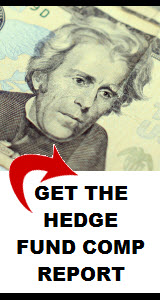The Atlantic offers an outstanding article on the rise of the “quants” and how their machines are taking over hedge fund jobs. It profiles Cliff Asness, founder of Applied Quantitative Research in Greenwich, CT, one of the world’s leading quant-fund managers.
AQR took as big a hit during the financial crisis as did other funds, when investors ran to the exits with their money. Assets under management at AQR dropped from a peak of $39.1 billion in 2007 to $17.2 billion in March of 2009. But since then, the firm has rebounded, earning 38 percent in 2009 and roughly 20 percent in 2010. Assets at the end of 2010 have crept back to $33 billion.
Nevertheless, some industry insiders blame the quants for being at least partly responsible for the crisis, pointing out that they may have been too confident in their mathematical models and less prepared for “Black Swan” or unpredictable events.
But both the market and the quants have recovered, and they seem to be on a tear toward revolutionizing the way hedge funds trade. According to Scott Patterson, author of the 2010 book, The Quants, we could have a scenario in the not too distant future where human trading is the exception, not the norm. It’s a scenario he sees as possibly leading to new boom-bust cycles.
“Go to a trading room, it’s just guys on computers,” Patterson said. “And a lot of times it’s not even guys, it’s just the computer running the machine. I don’t want to demonize it. I think there has to be a happy medium. But I’m personally worried that it can run off the rails.”
Traditional hedge fund managers, which Asness refers to as “quals”, search diligently for a handful of undervalued companies. They dig into the fundamentals, interview management teams, and analyze market statistics, hoping to come up with a few companies worthy of investment.
Quants, on the other hand, rely on a roomful of computes running proprietary trading programs to analyze reams of available data. Some, like AQR, build computer models that combine investment approaches. In AQR’s case, they buy undervalued stocks and bet against potentially overvalued “momentum” stocks at the same time.
But unlike the “qual” model, quants hold so many stocks, 500 to 1,000 and more, that they don’t have to be right all the time. They just need to have a 51 percent or better average of beating the market.
The Holy Grail of quant investing is their ability to construct these vast portfolios of stocks that are nearly perfectly hedged so that, over the long term, they will be relatively immune from market swings.
So far, quant investing remains a subset of the larger trading world. But who knows what the future will bring. What’s your take? Do you think computer-driven trading is the inevitable way of the future? Add your comments below.






Comments on this entry are closed.